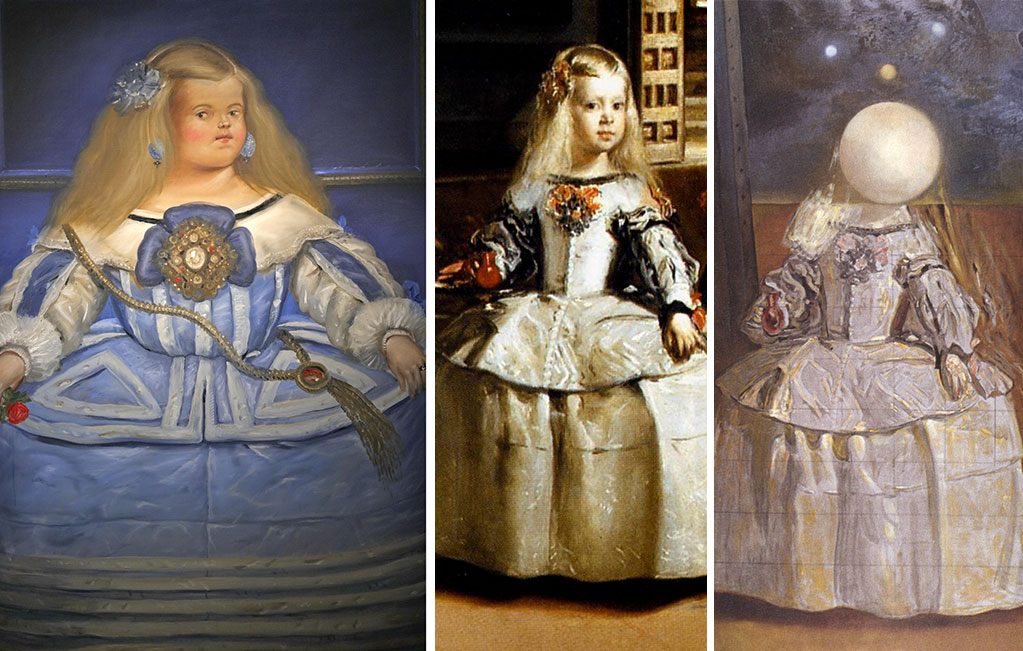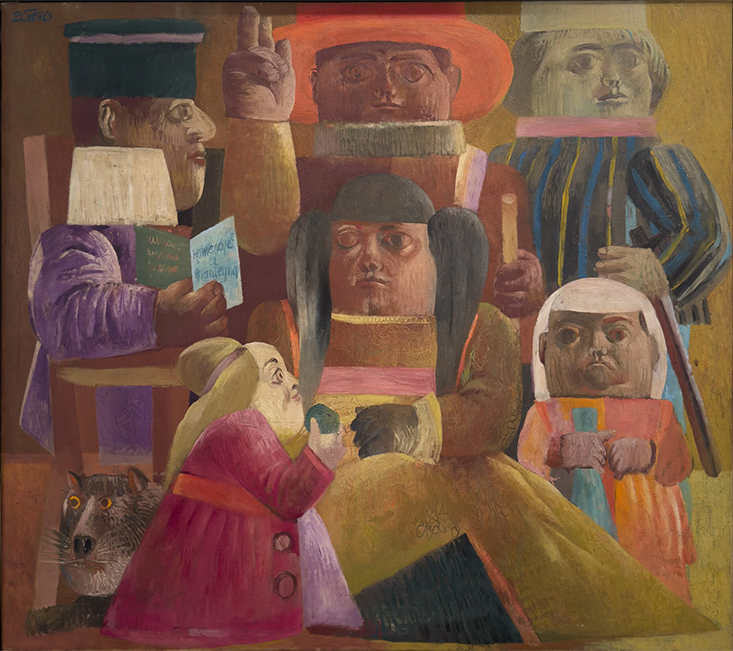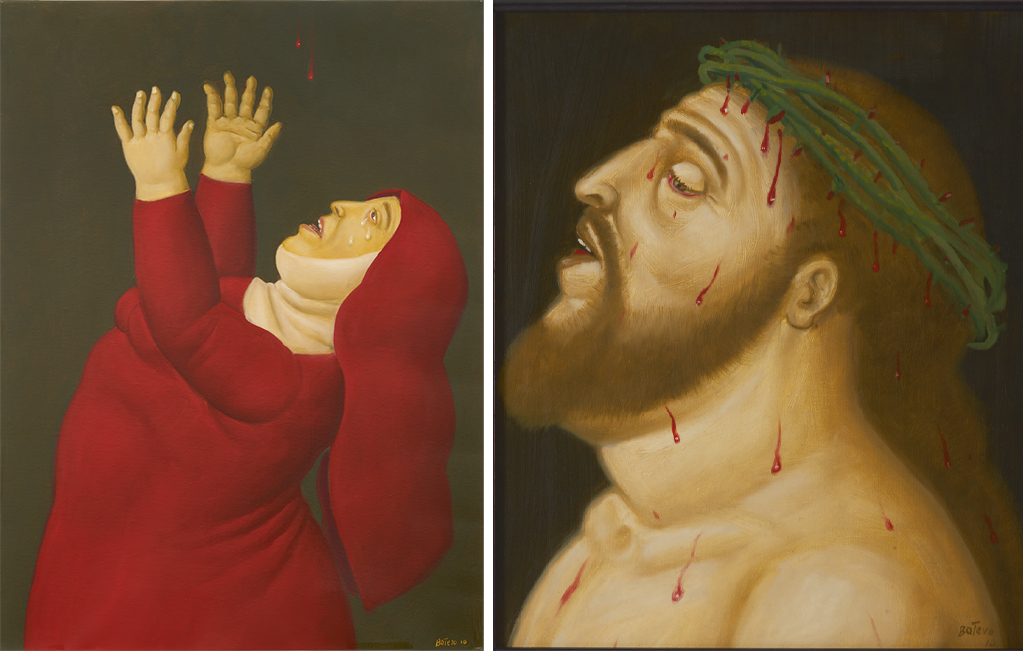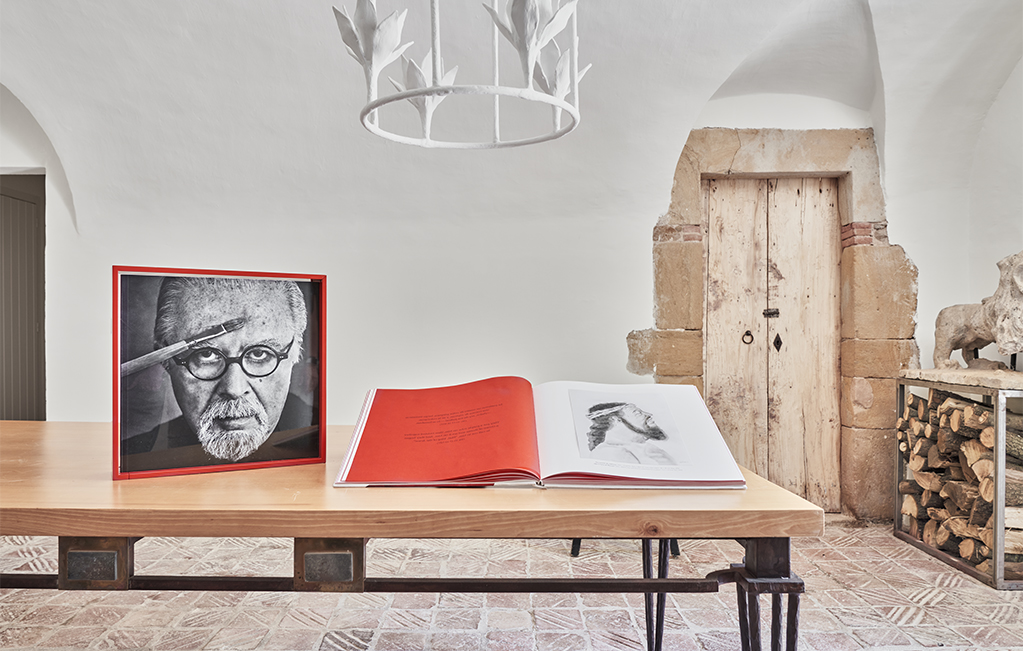‘A universal master’, Botero’s unpublished legacy
This April, when the master would have turned 93, his art remains more alive than ever, as clearly shown by the many exhibitions still captivating audiences worldwide. On this occasion, we turn our attention to one close to home: at the Palau Martorell in Barcelona, his daughter Lina Botero brings together, under the title ‘A universal master’, various works from private collections to share them with the public posthumously.
Two major works by Botero in a new light
Las Meninas by Velázquez is one of the most revisited works in art history. Many artists—including Picasso, Dalí, and Valdés—have created their own reinterpretations, and Botero is no exception. The Menina according to Velázquez is a piece by the Colombian artist portraying Infanta Margarita of Austria in his signature voluptuous style.

From left to right, details of the paintings: La Menina, según Velázquez, 2014 by Fernando Botero, Las Meninas, 1656 by Diego Velázquez and La Perla, c. 1981 by Salvador Dalí, ©Salvador Dalí, Fundació Gala-Salvador Dalí.
Also coming from a private collection and only discovered after the artist’s death is Homage to Mantegna, the painting for which he was awarded at the 1958 Salon of Artists for being as groundbreaking as it was controversial.
Under the master’s watch, neither of these works had ever been shown to the public before. Artists possess that gift of dying and being reborn in an instant—or of never truly leaving—and so their work, though finite, continues to be written and reinterpreted through the lens of society and art history.

Homenaje a Mantegna, Fernando Botero, 1958.
ARTIKA’s edition unveils another hidden gem
The oil painting Cerca de la Cruz belongs to the artist’s private collection and was revealed in 2022 in the artist’s book Via Crucis as a piece not included in Botero’s donation of the series to the Antioquia Museum. Although religion is a central theme in Botero’s legacy, Via Crucis revisits this topic—the passion and death of Christ—as a way to directly explore human suffering. The piece adds significant value to the collection not only as a revelation but also for its unconventional depiction of Mary Magdalene.
“The loss of innocence in his characters is undeniable, and it has been present in the last twenty years of his work, in a pendular movement between pain and pleasure.”
(Camilo Castaño, research curator at the Antioquia Museum, in his article Pain in the work of Fernando Botero for the Via Crucis Study Book)
Portraits of the Saint usually depict her in sorrowful or lifeless poses, as if the world were heavier for her than for others—kneeling before the cross or meditating, always on the ground. Botero’s brush, however, chooses to portray her differently. Though her expression remains anguished—with tears of despair and eyes turned heavenward—her arms and hands reach upward, breaking away from the typical posture of clutching the chest or letting them fall limp. There’s a distinctive energy in Botero’s interpretation: a transformation from a passive, anguished figure to a body that resists suffering—from being dragged down by grief to rising from the ashes like a phoenix.

Left: Cerca de la cruz, 2010.
Right: Cabeza de Cristo, 2010. Antioquia Museum, Medellín, Colombia.
The blood hovering like the sword of Damocles introduces God into the scene without being explicit, thereby preserving Mary Magdalene’s prominence. Her clothing shares the same color as the droplets. Every aspect of the work—physical, expressive, and chromatic—chases the sense of drama and violence that so strongly define Botero’s art.
VIA CRUCIS: a new vision of a revered series
-A numbered and limited edition of 2,998 copies, created in collaboration with the artist and the Antioquia Museum.
-Comprising two volumes, presented in a case-display featuring a silhouetted detail from the oil painting Cerca de la cruz —until now unpublished— gracing the front of the Art Book.
-The Art Book includes 34 plates illustrating the Passion of Christ through scenes reinterpreted by the artist in his unique style, each accompanied by a Bible verse.
-The Study Book features insights from Federico Mayor Zaragoza, former Director-General of UNESCO; David Ebony, American art critic; María del Rosario Escobar, Director General, and Camilo Castaño, curator at the Antioquia Museum. Their contributions explore Botero’s social, cultural, and artistic role on a global scale, studying his body of work and analyzing each plate in the edition.

